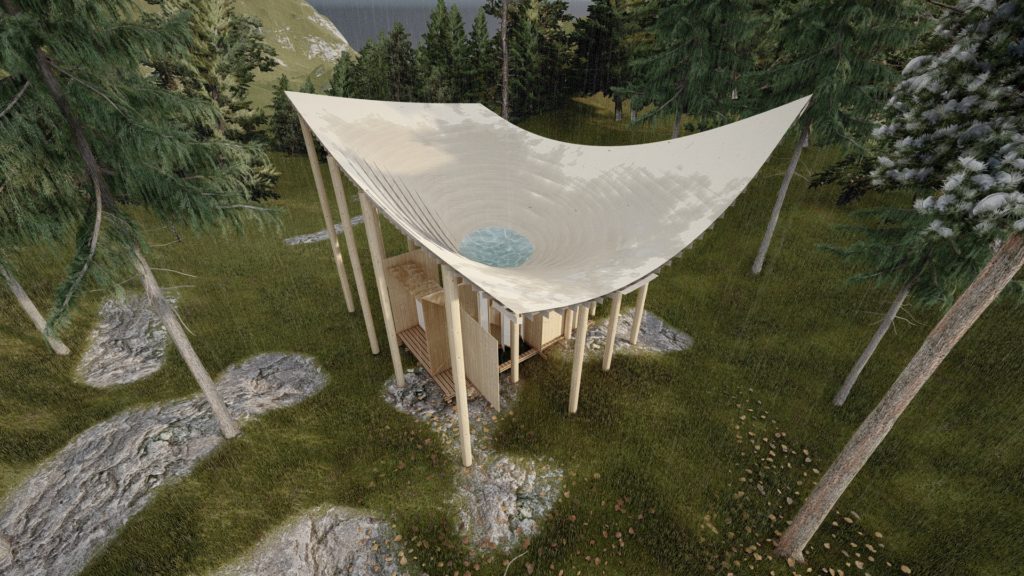ASSIGNMENT INTRODUCTION
The aim of the final assignment in the computational design seminar was to comprehend how various evolutionary solvers could be used in an architectural context in order to produce an optimized output. Using generative design tools like Galapapagos, Biomorpher and Wallacei, certain elements of a architectural project are to be experimented with respect to their fitness values and parameters such that a catalogue of optimized results is obtained, which would furthermore aid in the enhancement of the design.
PROJECT INTRODUCTION
Project Brief

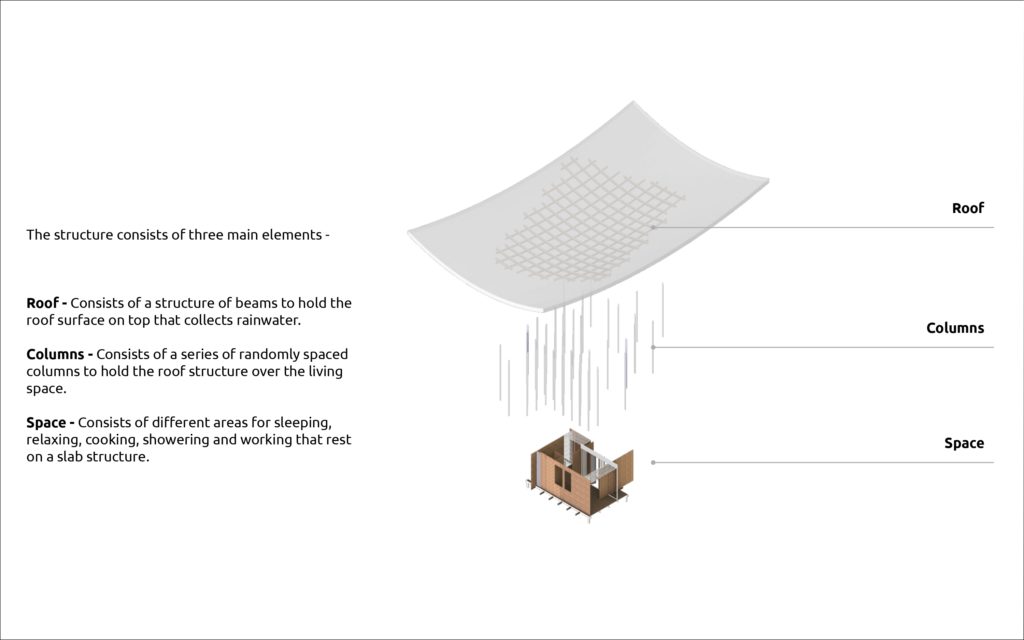
Site
The site for the Smallest architecture was chosen in the North-West area of Mallorca since the area receives the highest rainfall, which could then be stored for re-use during the summer months.


WORKFLOW DIAGRAM

OBJECTIVES: WHAT ARE WE OPTIMIZING AND WHY?
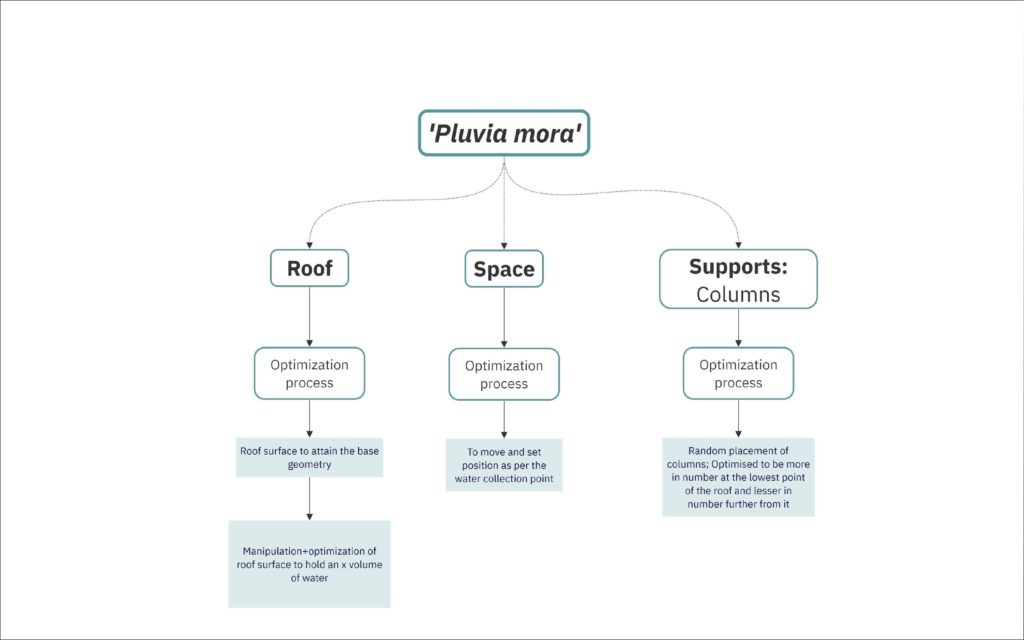
PARAMETERS AND FITNESS VALUES

PSEUDO CODE
Form finding for the roof

Roof surface optimization
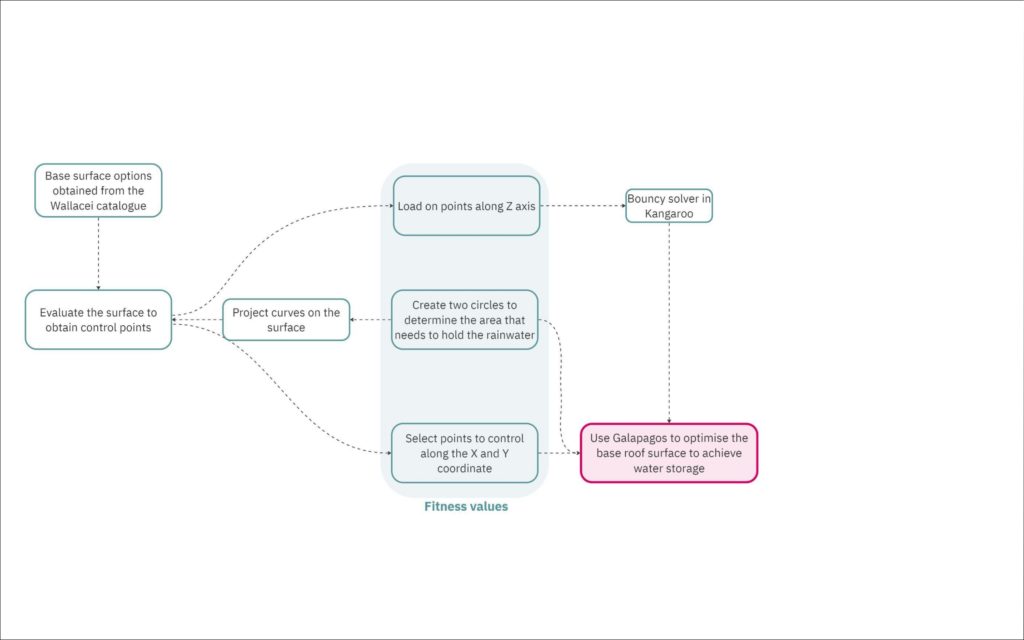
Column positions

OPTIMIZATION PROCESS
Optimization using Wallacei
The roof was divided into three form based typologies for the sake of simplistic categorization: Mildly curved, Medium curved and Extremely curved. The area of the roof and the z-axis movement of the vertices were used as the fitness values in Wallacei to create a catalogue of phenotypes which would further be optimised based on the water collection factors.
Roof base form – Catalogue of optimization results 1
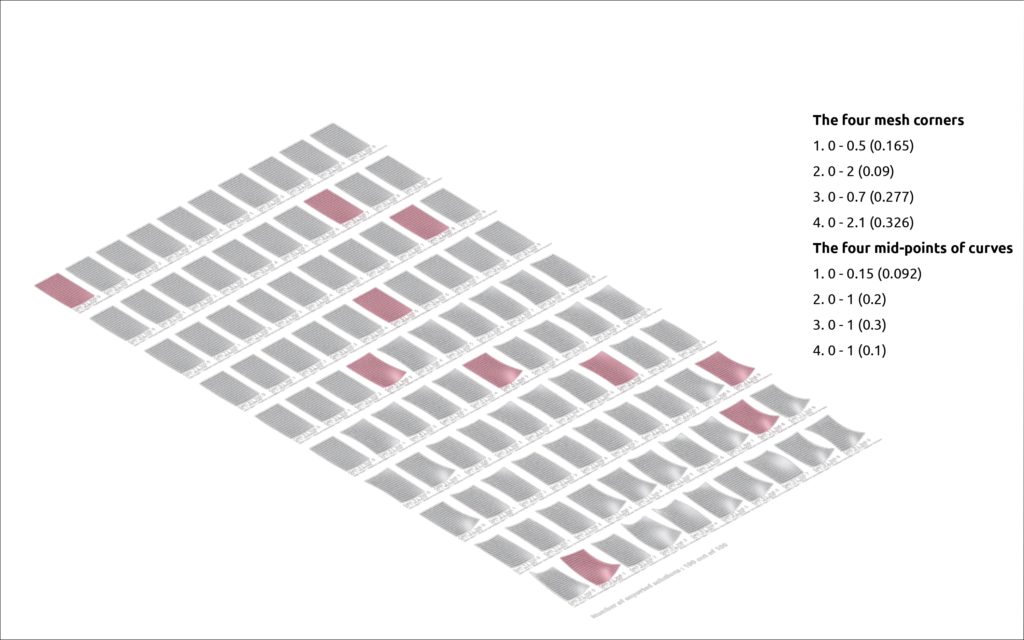
Roof base form – Catalogue of optimization results 2

Roof base form – Catalogue of optimization results 3

Roof base form – Catalogue of optimization results (selected from each previous range and each generation)
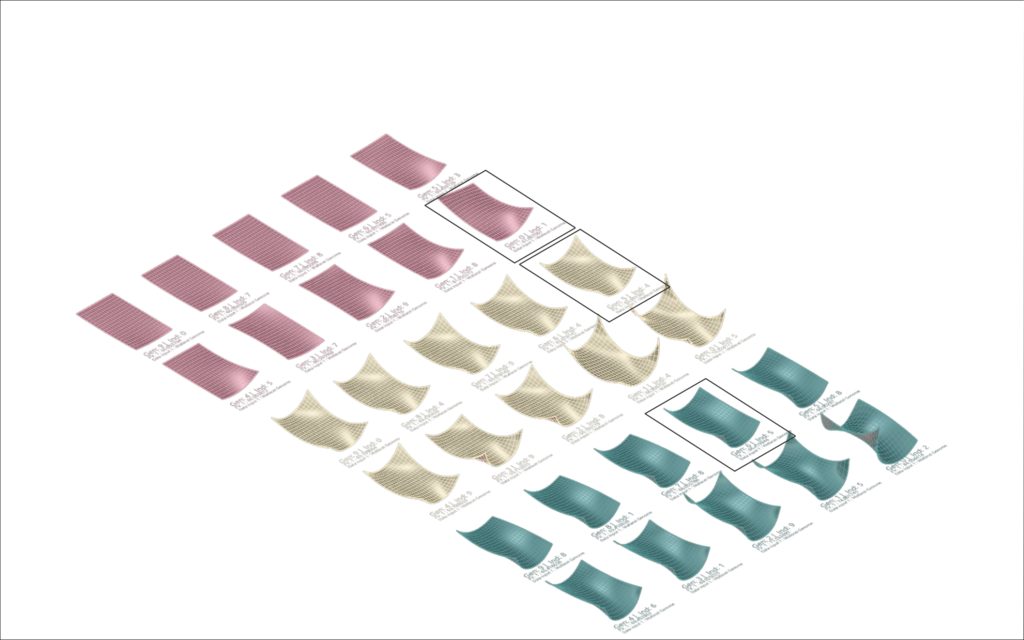
Roof base form – Catalogue of optimization results (selected from each previous range and each generation)
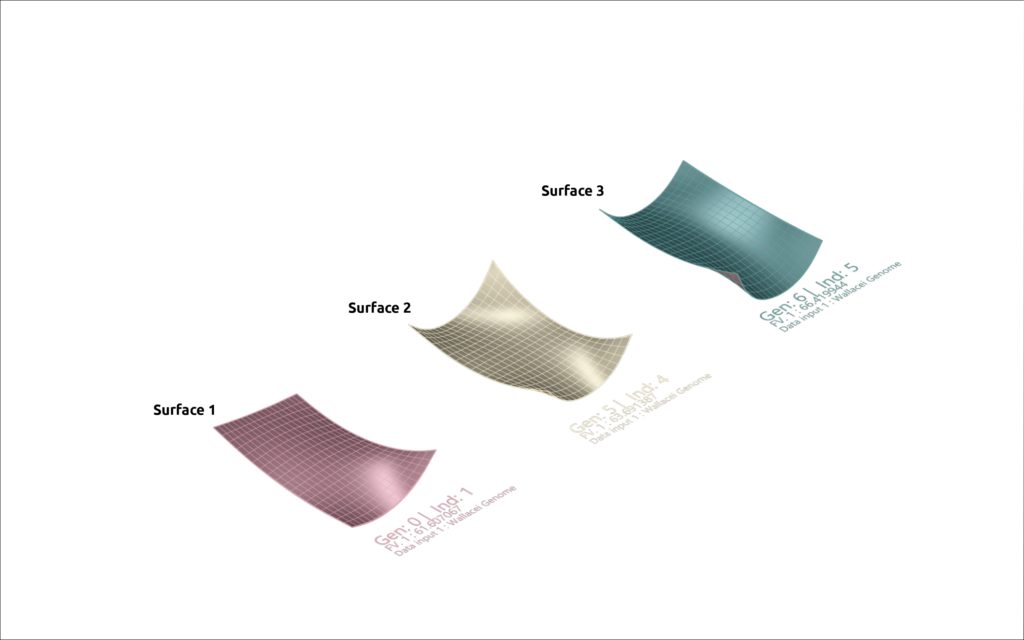
Optimization using Galapagos
The design of the roof was to optimized such that the roof could hold a maximum of 50 liters of water. To achieve most optimized form, a range of minimum and maximum surface area was declared where the roof was to get deformed to collect the rainwater, and a constant flow of water per second was specified. Based on these values, Galapagos was further used to explore the various typologies that could be achieved with the given requirements.
Form optimization: ROOF SURFACE 1
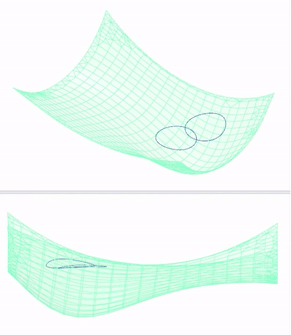
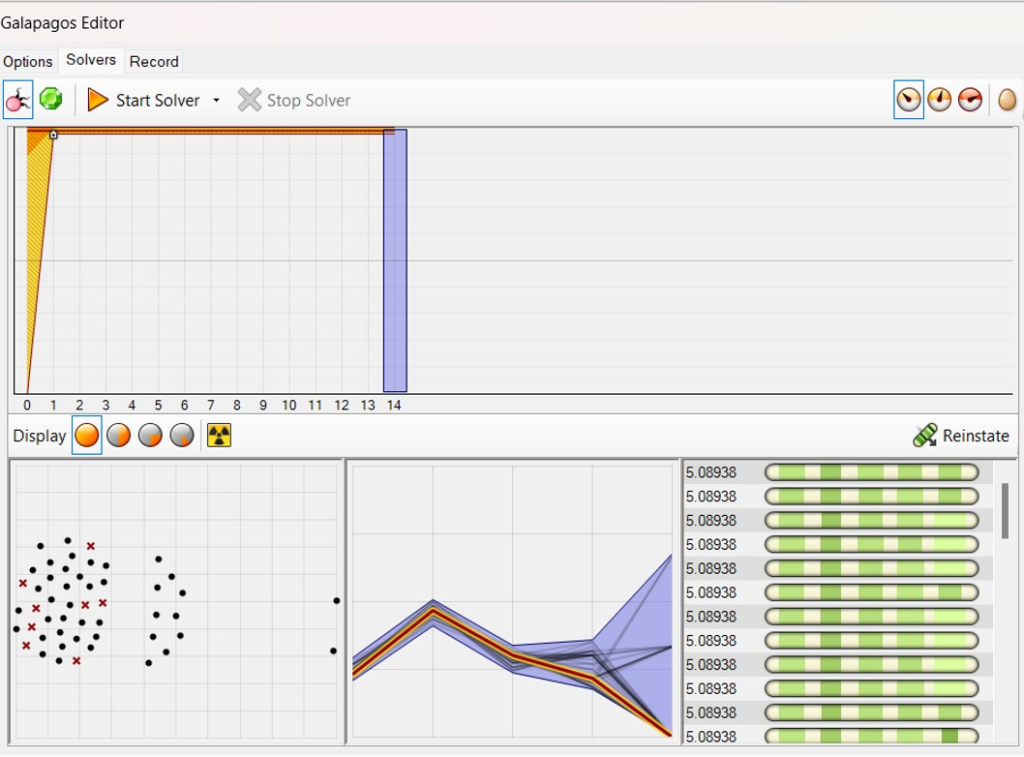
Form optimization: ROOF SURFACE 2

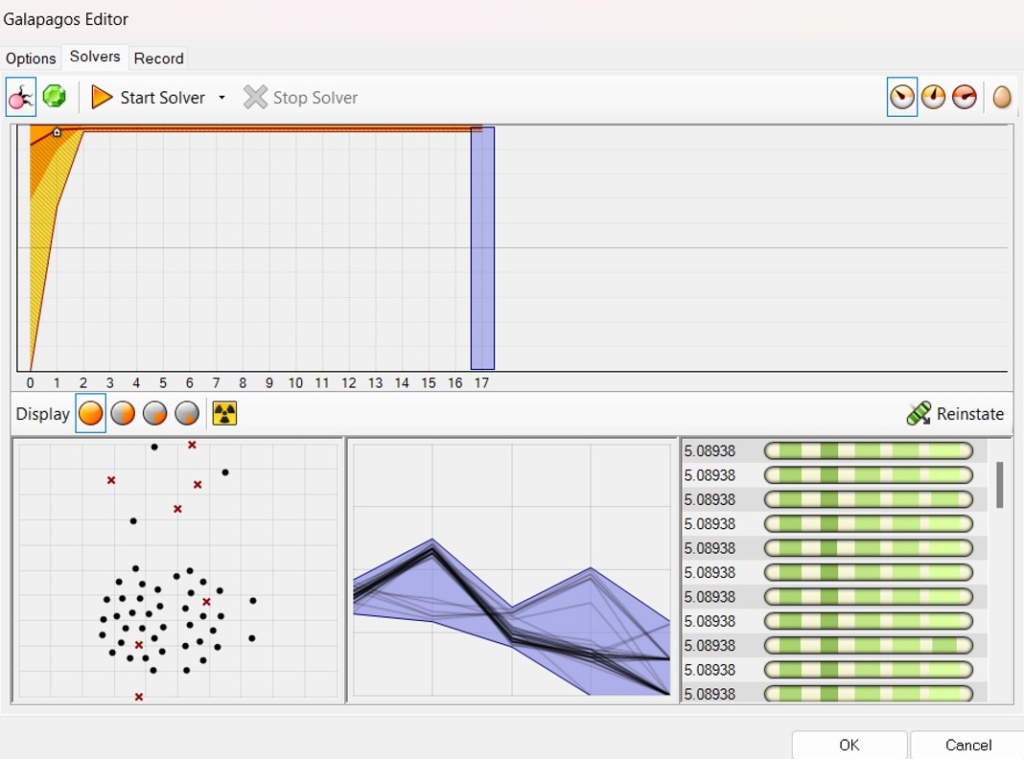
Form optimization: ROOF SURFACE 3

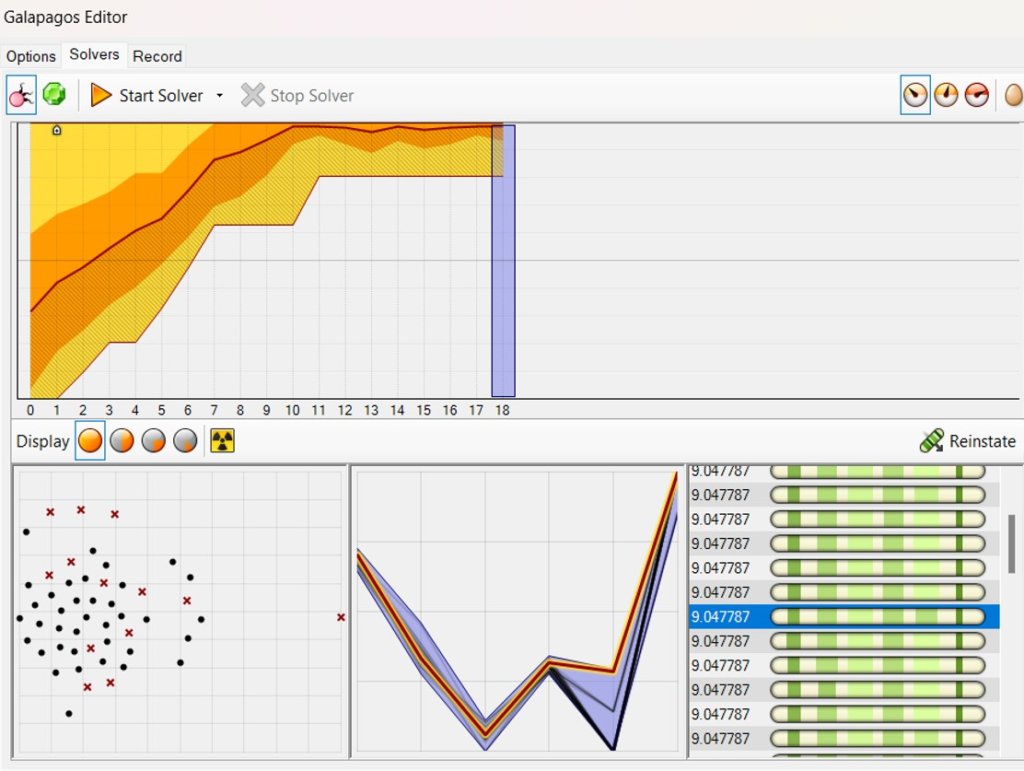
Column position optimization
The main structural support for the roof is the columns. Based on the design, the requirement for the columns is to have a random placement, ensuring each part of the roof was supported and Galapagos was used to create an optimized layout.


RENDERS



